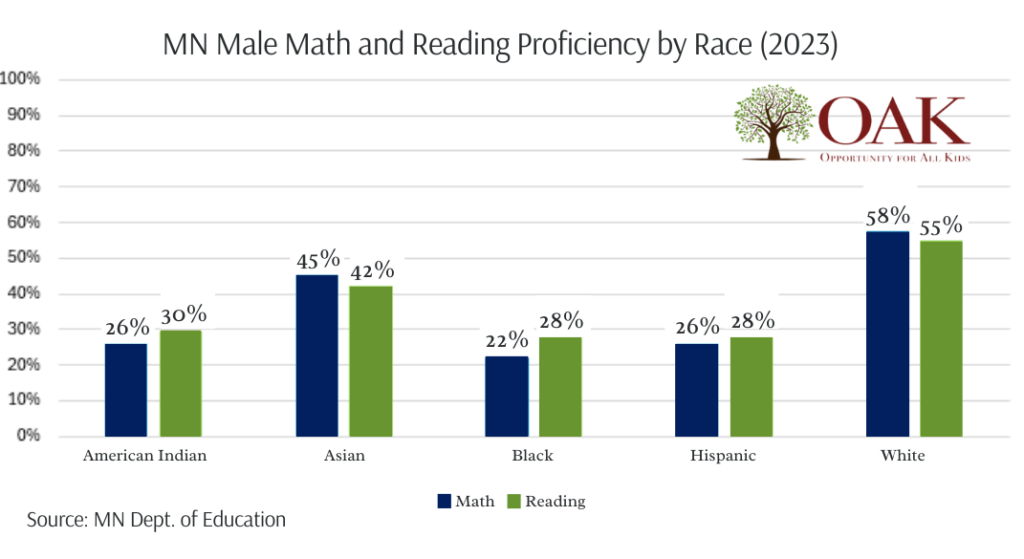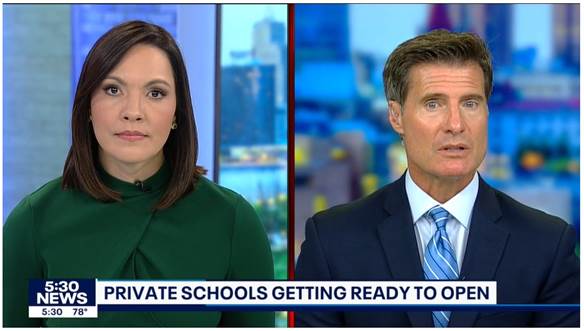Last fall, I visited Hope Farm School, an all-boys boarding school located in Wisconsin, to interview staff and students on their experiences.
The eagerness and enthusiasm among the boys was refreshing. I was especially impressed with their ability to interact and carry on respectful, interesting conversations with adults, something quite different than the behavior seen in most teen boys.
Why were these boys thriving and happy?
Many factors are likely at work, but in general, Hope Farm School recognizes the unique needs of boys and seeks to meet them in the school setting, giving them plenty of time outdoors, hard physical work, and academic instruction time and methods that cater to their energy and attention span.
Sadly, the same cannot be said of most normal classrooms. Schools try to create an equal playing field, author Tom Sarrouf, Jr. writes in a recent piece, “What’s Wrong With Boys at School?” But the reality is that the school system often benefits girls—in numerous ways, as Sarrouf records:
Women outperform men in school in terms of school readiness in kindergarten, GPA, and increasingly in college enrollment and degree attainment. According to Richard Reeves, of the top 10% of students, two-thirds are girls. On the flip side, boys comprise nearly two-thirds of the bottom 10% of students. While boys outperform girls overall on standardized tests such as the SAT and ACT, girls perform better on the written and verbal portions of the exams while boys outperform on STEM subjects.
Such is the case in Minnesota, for as I’ve written previously, “Minnesota’s Public Schools Serve White Girls the Best.” But let’s just take girls out of the equation for once and give our full attention to how the boys in our state are doing in math and reading.
The chart below shows that 48% of boys in all grades are proficient in math, just a hair better than the statewide average of 46%. In reading, 47% of boys in all grades are proficient, running about three percentage points below the statewide average of 50%.
In the grade-by-grade breakdown, however, male math proficiency sees a steady decline from 63% in third grade to 37% in 11th grade. Male reading yo-yos up and down across the years, starting at 45% proficiency in third grade and ending at 48% in 10th grade. In essence, only 37% of Minnesota boys leave high school proficient in math, while only 48% of Minnesota boys leave high school reading proficiently.
But this abysmal picture is even more depressing when we break down male proficiency numbers by race. Below are the math and reading proficiency rates for all males in all grades:

These visuals send a striking message: our schools are failing our boys. As Sarrouf says:
‘Equality’ in schools can only go so far. Improving outcomes for boys means utilizing interventions that appeal to boys as boys. For teachers and librarians, preparations for next year can be as simple as restocking libraries with books that boys want to read. For administrators, moving towards subjects, disciplines, and skills that appeal to boys should be introduced back into the curriculum in future years, and recruiting more male teachers is an important and tangible goal. More generally in our culture, ‘letting boys be boys’ must become a cri de couer for raising our future generation of boys into the successful men that we need.
But let’s face it. The education system is so huge that implementing such innovation will take years. And judging from the above proficiency rates, our boys don’t have years. They need help—right now.
That’s where Education Savings Accounts (ESAs) can come in handy. By providing roughly $7,000 for each student to take to the school of their choice, parents of boys can use their money for extra tutoring, or even specialized classes that will channel male energy and interests into learning.
ESAs will likely spur more innovative educational institutions, meaning that we may even see the revival of more all-male schools—places where boys don’t have to compete with their female counterparts, can have more hands-on learning opportunities, and even books and reading materials which pique their interests.
The system is clearly failing our boys. Isn’t it time we tried something different in order to give them hope and a future?
—
Image Credit: Pexels











![[downloaded during free trial]](https://oakmn.org/wp-content/uploads/2025/11/iStock-1430368205-120x86.jpg)

